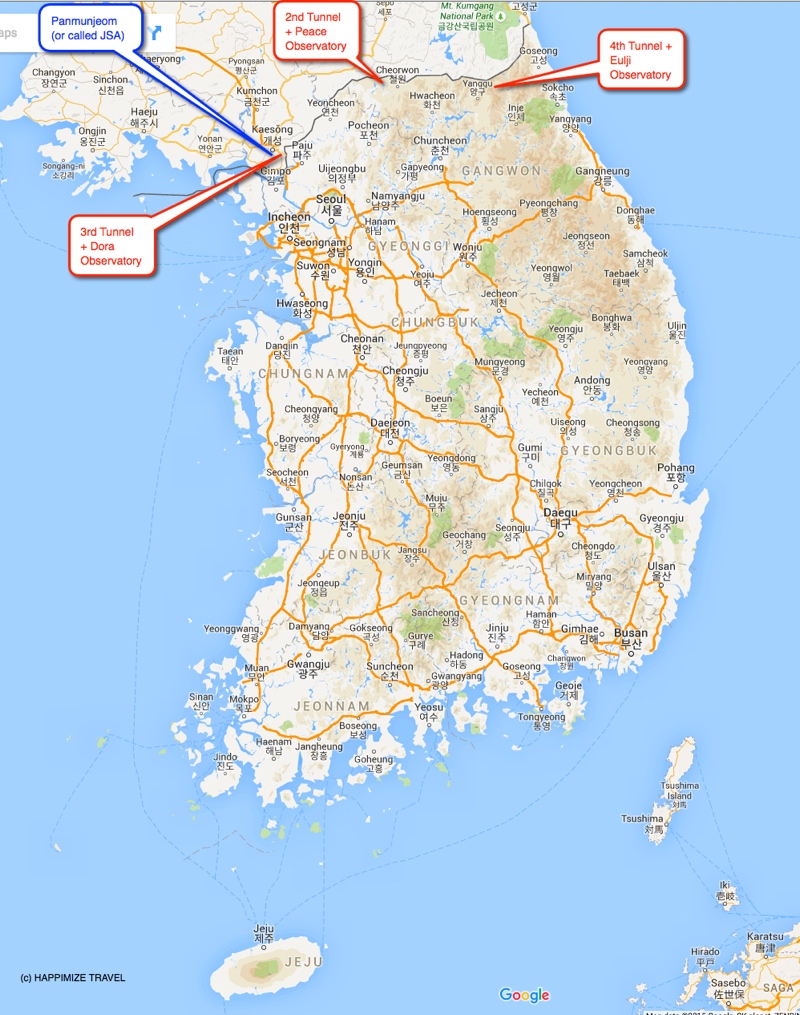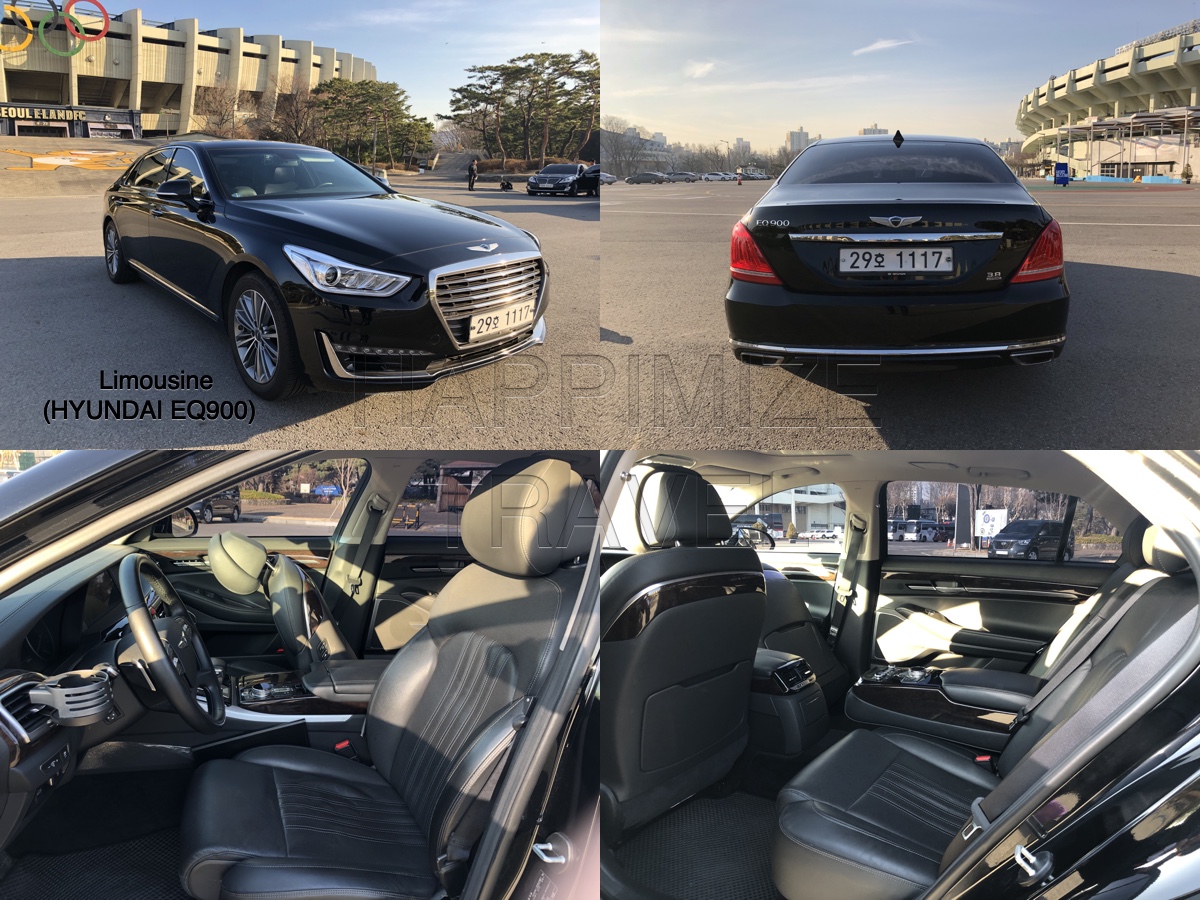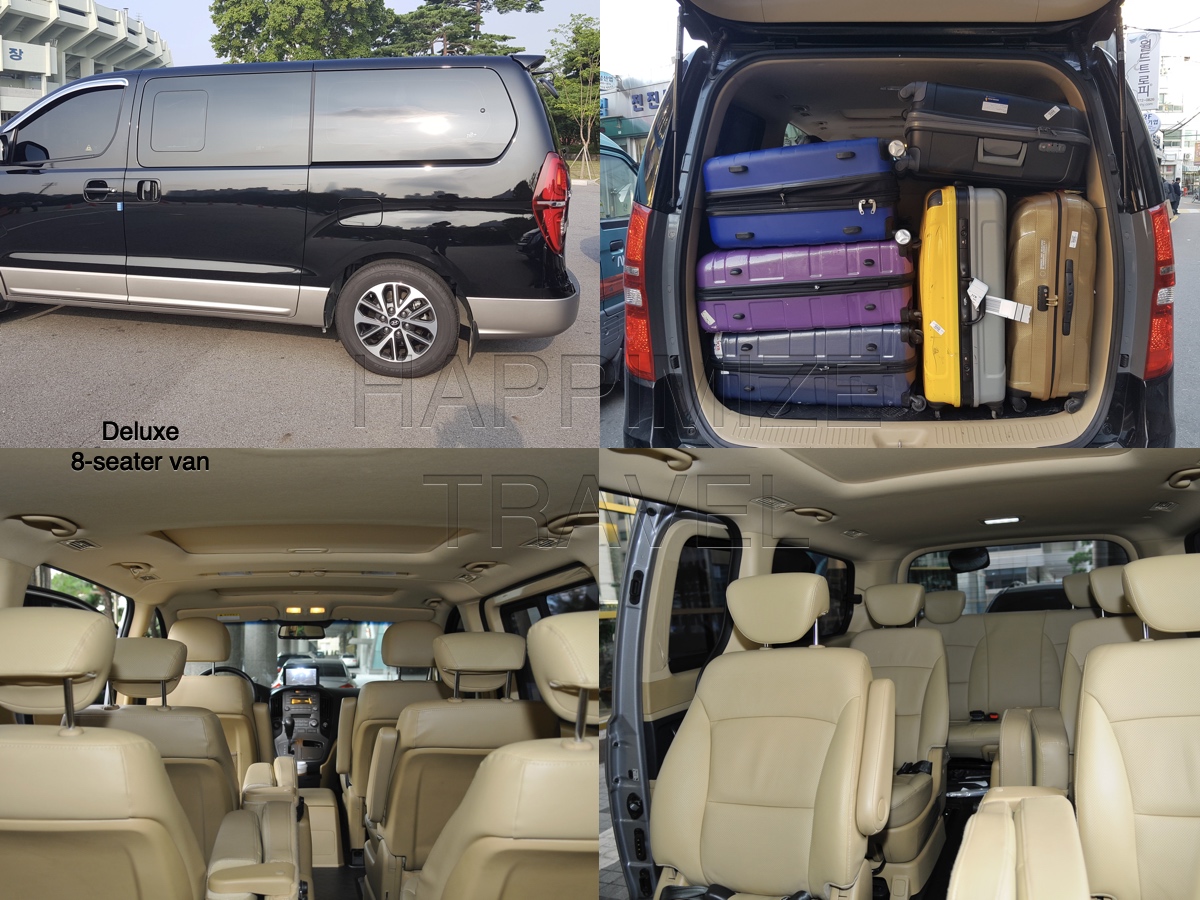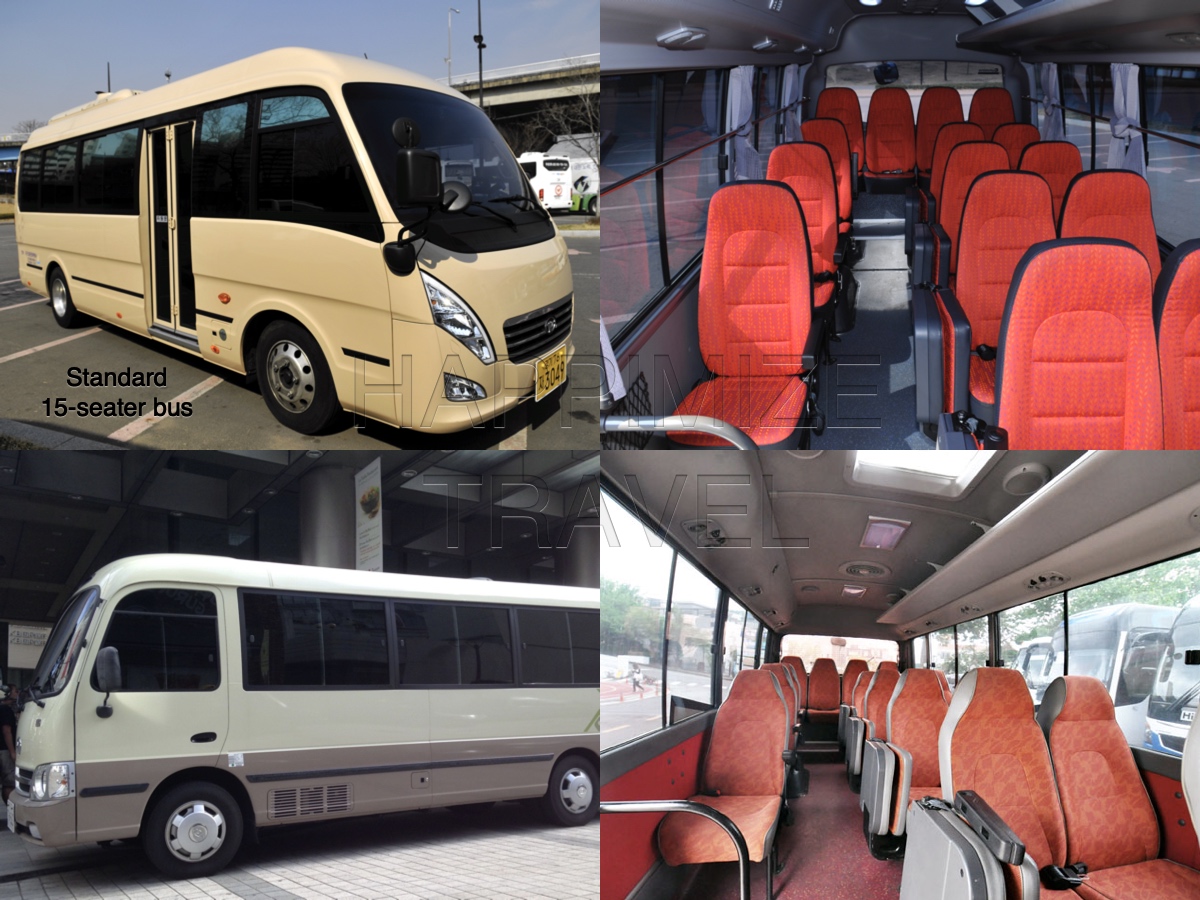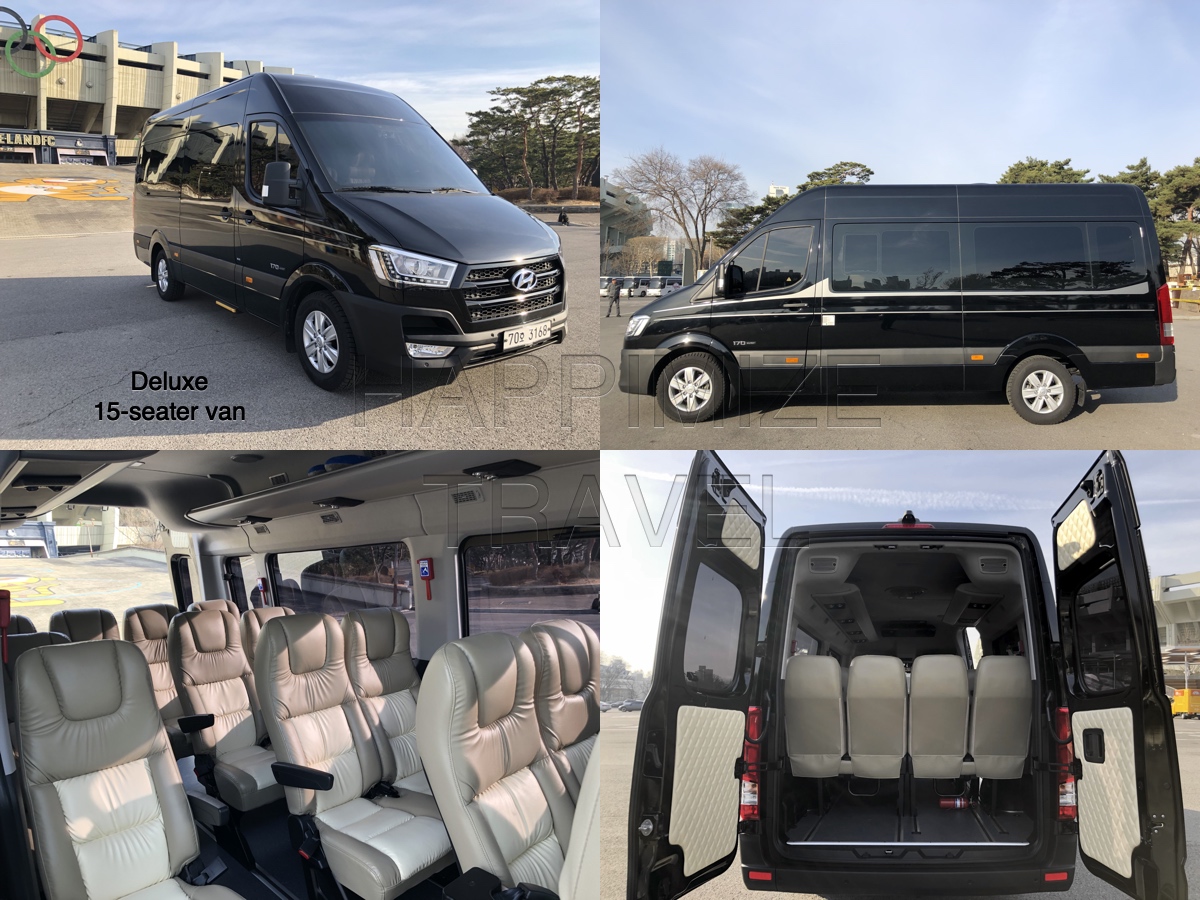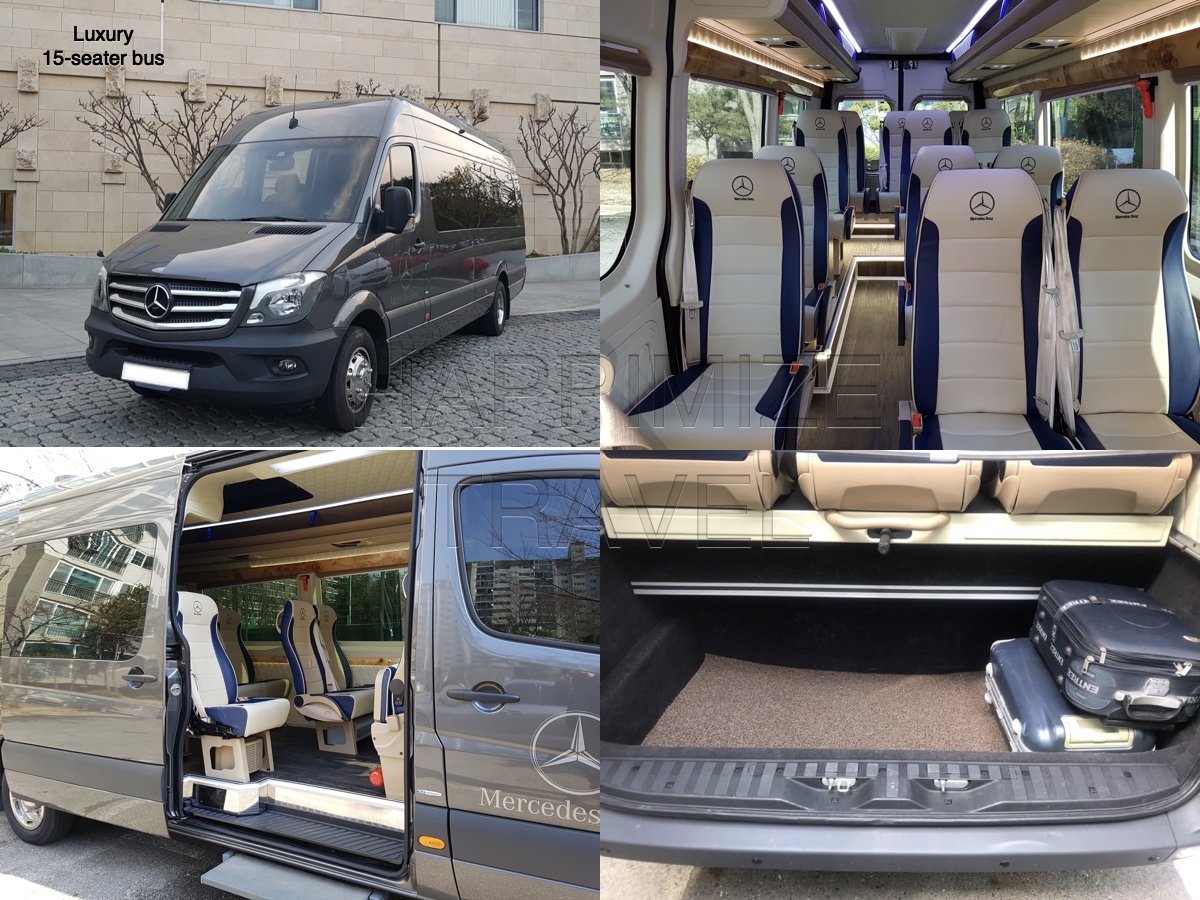(Updated on 29 July 2023)
During pandemic, several changes happen.
Because many our clients are asking the same/similar questions, we decided to provide the current situation regarding available DMZ TOURS at SOUTH KOREA.
Currently, JSA TOUR is closed due to the accident by US solider. For details, see this.
For Type I DMZ TOUR, the following two tours are under operation.
(1) 3RD TUNNEL + DORA OBSERVATORY → We call PAJU DMZ TOUR (every Monday off)
After COVID, the operating committee reduced the total number of visitors. This means the allowed number of buses is reduced. For example, only 30 buses incl. official buses (departing from Ticket Office) can go inside Civilian Control Zone. Therefore, many travel agents who are gathering tourists at SEOUL have no choice but to depart from SEOUL very early morning to arrive at IMJINGAK before 7:30am. (Unfortunately, this arrival time doesn’t guarantee the allowed number of buses.)
If you want to visit PAJU DM TOUR privately, you should also arrive there by 7:30am. And you should line up to buy the tickets, which is scheduled to open 09:00am. If you are lucky, you can buy the ticket tied with each official bus. (i.e., The departure time is written on your ticket; 09:00, 09:30, 10:00…)
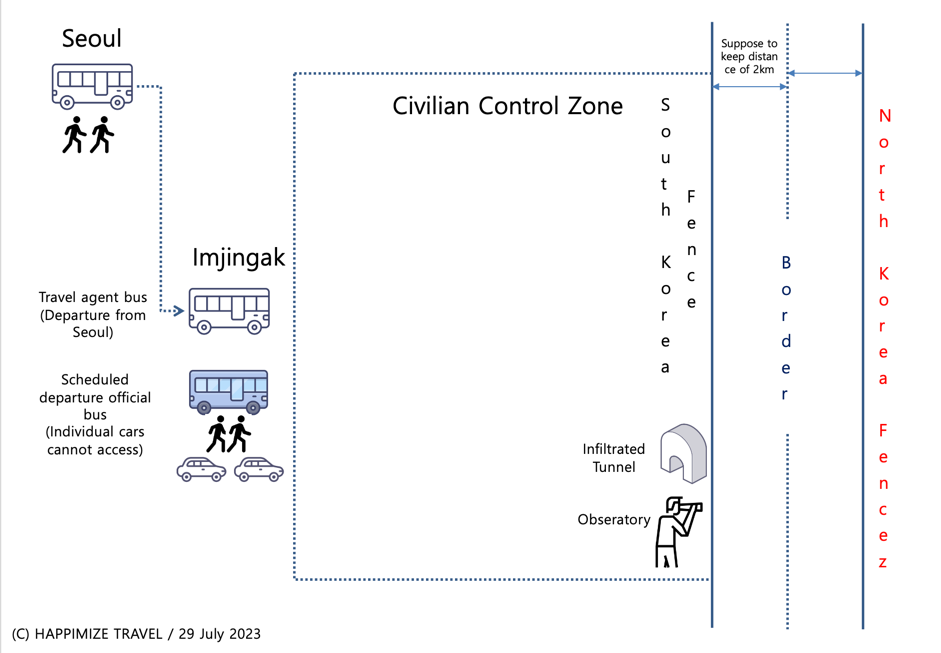
(2) 2ND TUNNEL + PEACE OBSERVATORY→ We call CHEORWON DMZ TOUR (every Tuesday off)
Since 1st July 2023, CHEORWON reopened 2ND TUNNEL and we could visit ‘the whole components of DMZ TOUR’.
The advantage of CHEORWON DMZ TOUR is to use our own car. I.e., No need to join the official tour bus. Also, you can feel real tension between SOUTH and NORTH KOREA unlike PAJU DMZ TOUR. This means no need to hurry to get the limited tickets.
The disadvantage is the longer transfer time. The distance between SEOUL CITYHALL to CHEORWON is 110km and 2h is required to reach there.
(Updated on 1 Jan 2020)
DMZ tour means to visit the border between SOUTH and NORTH KOREA. Upon the ceasefire agreement in 1953, UN and NORTH KOREA signed an agreement that two parties keeps ‘a kind of’ peace zone for 2 kilometers each.
There are two types of DMZ tours; Type I is the tours visiting the places consists of the infiltrated tunnel and observatory, Type II is the tour visiting PANMUNJEOM (or, called JSA; Joint Security Area).
To visit PANMUNJEOM, you need to join a group tour and you should get on the tour bus at Seoul.
Also, the child under 11 cannot join the tour.
Though it is group tour, Sometimes, it is not easy to get a seat even though you try to book the tour in advance (e.g., very early sold out in October) because the total number of slots is fewer than 200 per day.
In the past, this PANMUNJEOM tour was worth to join because you ‘might’ have the chance to watch the North Korean guards. But, now days, only one guard is looking us at a distance of several hundred meters.
For Type I DMZ tours, we have 3 places; PAJU, CHEORWON and YANGGU in the order of the distance from Seoul.
If your friend mention a DMZ tour while she/he was at SOUTH KOREA, they probably visited PAJU DMZ tour because 99% of travel agents are selling this DMZ tour.
Why common? PAJU (specifically, IMJINGAK) is the closest place among several DMZ tour places and there is no restriction on the booking.
But, all people get on the shuttle bus after buying the ticket at the spot. (i.e., No one can use their private car in the DMZ zone.)
Also, this place is very crowed because too many tourists are visiting. Furthermore, to look inside 3RD TUNNEL, you need to walk down/up steep 350m tunnel to reach the original tunnel dug by North Korea. That’s why we don’t recommend PAJU DMZ tour especially for seniors, or any person who has cardiopathy problem.
Then, how different are CHEORWON, or YANGGU DMZ TOUR?
These DMZ places are not popular comparing to PANMUNJEOM or PAJU because the locations are farther and it leads most travel agents hesitate to sell the tours.
But, if you go to either of these places, you can feel the real atmosphere, which arises from the military tension between South and North Korea has continued for more than sixty years.
■ DMZ places
